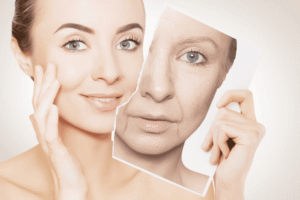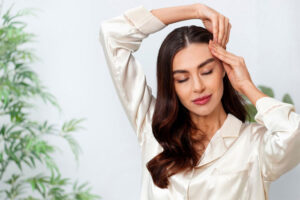You might have heard of this condition before. If not, you must be familiar with dandruff. Both are not the same but show similar symptoms.
There is another term, Seborrheic Dermatitis. These three conditions are commonly considered the same, but they are different.
Cradle cap is widely used to describe oily flakes and greasiness in the scalp and other body areas in children. These symptoms may develop in adulthood.
Here, we will let you know eight effective ways to get rid of this skin condition. So, let’s have a look.
Adults with Cradle Cap
Have you seen those oily and greasy flakes on your scalp or other body area following itching or mild inflammation and want to get rid of them? If yes, you are at the right place.
Cradle cap in adults is usually harmless but a considerable condition that mostly causes flaking and redness in the affected area.
Similar to children, the scalp is more vulnerable to the symptoms.
When it happens in adults, it causes:
- Yellow or white flakes
- Greasy or oily skin
- Itching
- Temporary hair loss in the affected area
- Redness
- Spread of symptoms to other body parts
No one knows what exactly causes cradle cap, but Malassezia is a yeast that is found to be responsible for the over-production of oil, which causes greasiness and build-up of flakes on the skin.
It is less common in adults, but luckily, more treatment options are available for adults.
8 Ways to Soothe Cradle Cap Affected Skin
Children may ignore the symptoms, but adults should seek proper treatment. Otherwise, the condition may worsen over time.
The eight different ways below will let you say goodbye to flaky and greasy skin and get your natural skin tone back.
It is recommended that you read about each to choose the one that suits you. However, the last step must be followed, regardless of your treatment.
1. Medicated Cream
Cradle cap is mainly considered the build-up of flakes, which is true, but it comes with excessive oil, itching, and redness.
Possibly, mild inflammation too. Instead of getting treatment for each symptom, why not try all-in-one treatment? A medicated cream for cradle cap will do the job effectively if used correctly.
You may try over-the-counter creams, but I recommend taking a doctor’s prescribed cream.
Use the cream before sleeping, leave it overnight, and rinse thoroughly the next day or following the doctor’s instructions.
2. Cradle Cap Shampoo
As I mentioned earlier, all-in-one treatment is a cost-effective and quicker way to relieve its symptoms.
Like cream, a cradle cap shampoo for adults will treat all associated symptoms and remove flakes.
However, the case of shampoo is somewhat different from cream.
The cream should be used before sleep and rinsed with water to avoid residue build-up.
The shampoo can be used anytime but during bathing. Whenever you take a bath, take this shampoo with you and apply it to the affected area.
Massage with it for a while. Leave for 2 minutes to let it work, and rinse thoroughly. Use it two times a week.
3. Lifestyle Changes
 source: UCSF
source: UCSF
Changing your lifestyle to manage cradle cap will be highly effective in its treatments.
It includes the use of products, diet, environment, and related aspects.
If you use regular shampoos and soaps, replace them with baby shampoo or medicated ones.
Use products specially created for sensitive skin. Take regular and sufficient baths to reduce the excessive oil.
Live in a healthy and clean environment. Dust particles may come in contact with oil in the scalp, resulting in the formation of flakes.
Some diets like fatty processed, and high-sugar foods could be bad for cradle cap, so you must avoid them.
4. Aloe Vera Gel
There is no need to mention the benefits of aloe vera because you already know.
However, you might not know that aloe vera gel can soothe the symptoms of cradle cap and can be used for its treatment.
To do so, apply a small amount of gel to the affected area and rub gently.
Massage the area carefully and deeply and leave it for some minutes to let it work.
Then, carefully remove the flakes without damaging the skin or picking hair.
Rinse with water to clean the skin. Do this for some days and see if it works. The gel will reduce itching, inflammation, and redness.
5. Natural Oils
Fewer pieces of evidence support the fact that natural oils are good for treating flaky skin.
However, most people have reported good results after using essential oils like tea tree oil on cradle cap.
Coconut oil is considered a great option to soothe its symptoms.
Apply the oil and massage deeply. Leave it for some minutes, and then rinse with a good shampoo.
Do not use regular shampoo. Use baby shampoo or a medicated one. You can also add a few drops of oil to shampoo for better results.
6. Brushing
If flakes need to be manually removed, like after aloe vera gel or massage, use a brush gently on the affected area. Brushing can be done before, after, or during a bath.
Choose a brush with soft bristles, this will help remove flakes and avoid damaging hair or skin.
Brushing is generally safe unless there is an infection or open wound in the affected area. If that is the case, seek professional treatment.
7. Massage the Affected Area
Massage helps in relaxing muscles, it has various impacts on your health that I cannot describe within a single paragraph.
Massage will help loosen flakes, relieve itching, and reduce inflammation.
Use natural oil to massage the affected area. A gentle 20-minute massage is safe and provides various other benefits.
Aloe vera gel can be used for massage for better results than oils.
8. Following Preventive Measures
- Do not scratch the affected area. You may end up damaging your skin.
- Do not use oily products (natural oils are exceptions).
- Do not eat processed, high-sugar, and fatty foods.
- Do not manually pick flakes with your finger.
- If you notice hair loss after the cradle cap, wait for some days before trying any treatment because hair loss due to this condition is usually temporary.
- Do not be too quick to get treatment. Wait for some days and let it fade on its own.
Conclusion
Every disease has its treatment. Cradle cap in adults is not so harmful and have various treatment options available.
In this article, I have mentioned the eight most effective ways to treat cradle cap symptoms in adults. I hope you will follow any of these ways.



